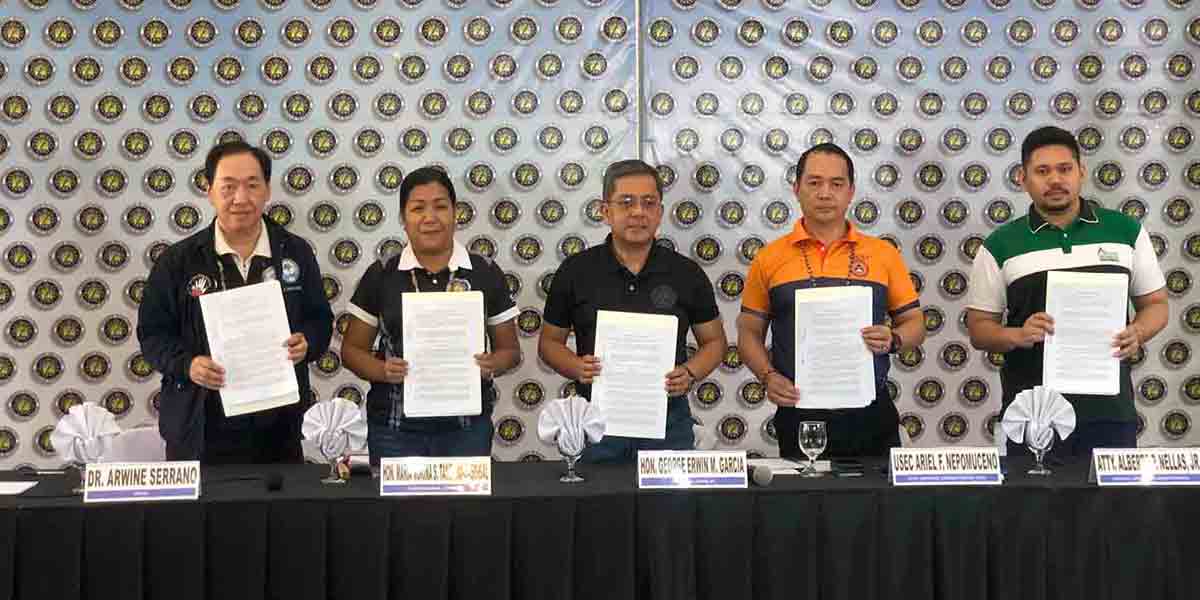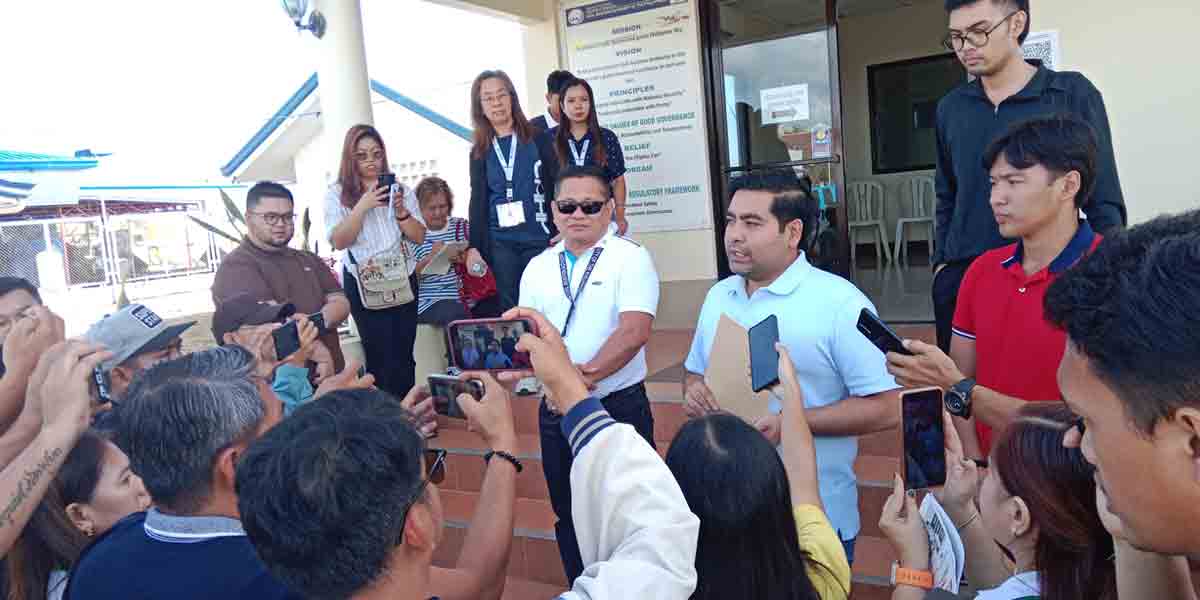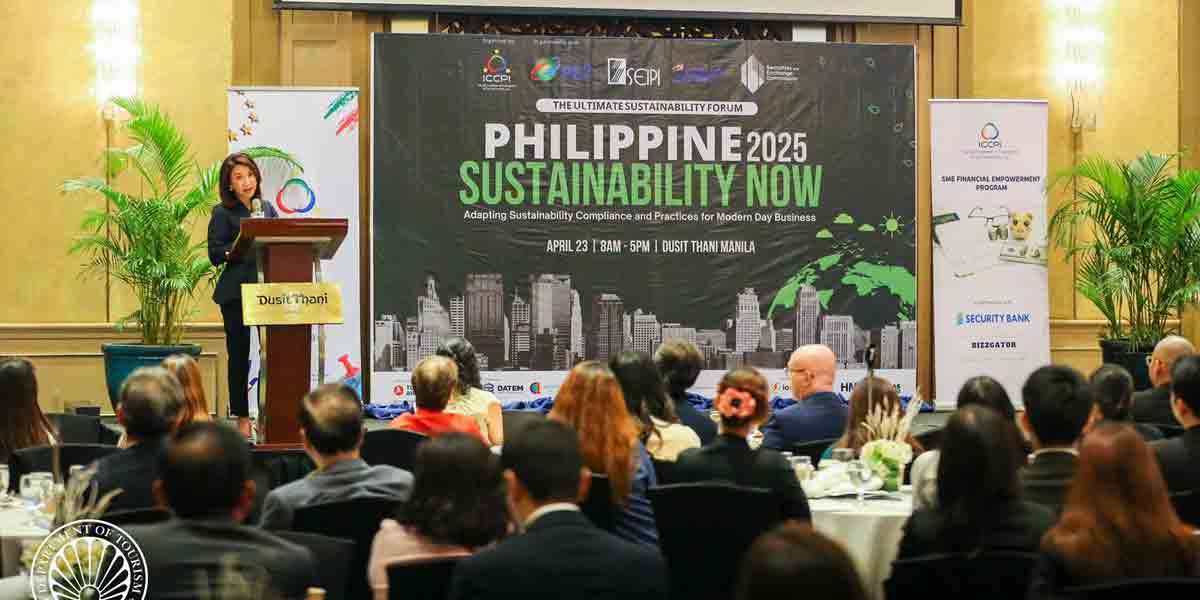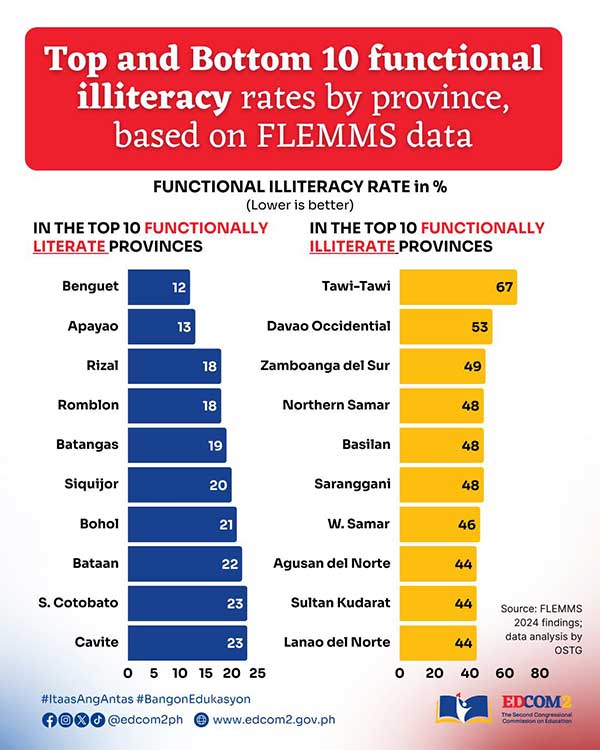
Roughly 18 million Filipinos who have completed high school may be functionally illiterate, according to the Philippine Statistics Authority’s (PSA) 2024 Functional Literacy, Education, and Mass Media Survey (FLEMMS), alarming education officials and lawmakers during a Senate hearing on April 30.
The findings were discussed by the Senate Committee on Basic Education, chaired by Senator Sherwin Gatchalian, who also serves as co-chair of the Second Congressional Commission on Education (EDCOM 2).
“There are approximately 5.8 million people who are not basically literate,” Gatchalian said during the hearing.
“If you look at functionally illiterate, there are 24.8 million who have problems comprehending… This is the gravity of our situation right now, and I support the new definition [of literacy] because now we have a good picture of where we are,” he added.
FLEMMS, a national survey conducted in the second half of 2024 with 572,910 respondents from 177,656 households, now uses a stricter definition of functional literacy.
Under the previous 2019 methodology, all high school or junior high school graduates were automatically considered functionally literate.
However, the 2024 update redefines functional literacy to include higher-level comprehension skills beyond basic reading, writing, and numeracy.
“There are high school and junior high school graduates who…did not pass the new definition of functional literacy… In other words, 18 million graduates from the system are not functionally literate,” Gatchalian emphasized.
Using the old definition, 79 million Filipinos were considered functionally literate in 2024.
But with the revised definition, the number dropped to 60 million, exposing a significant literacy gap.
PSA Social Sector Statistics Service Director Adrian Cerezo confirmed this during the hearing, saying, “Accurate, sir. We note that there are actually a significant number who are passing or graduating but are not really functional literate.”
He added that 21% of senior high school graduates are functionally illiterate.
“That’s quite concerning. That means one out of five of our graduates cannot comprehend and understand a simple story, and that’s something we need to address,” Cerezo said.
“This is a problem of basic education—paano sila nag-graduate nang hindi sila functionally literate?” Gatchalian said.
“No one should graduate in our basic education system that is functionally illiterate.”
He pointed out that EDCOM has encountered 15-year-old students who still cannot read a simple story, an issue he believes many educators are witnessing across the country.
The Department of Education (DepEd) acknowledged the issue and presented its current interventions, including the revised K to 10 curriculum, the Early Language, Literacy, and Numeracy (ELLNA) Program, learning loss remediation, and the ARAL Program, which was institutionalized in December 2024.
DepEd Chief Education Program Specialist Rosalina Villaneza said the agency will conduct a beginning-of-school-year assessment using the Philippine Informal Reading Inventory (PHIL-IRI) to identify students needing intervention.
“We will be conducting beginning-of-school-year assessment for PHIL-IRI which will guide us as to who are these learners who need intervention,” Villaneza said.
“There is a need for us to train a reading teacher for secondary so that each secondary school will have a reading teacher who will address the needs of these learners,” she added.
Cerezo said intervention programs should also be developed for working-age Filipinos who are still functionally illiterate.
Among regions, Region IX (Zamboanga Peninsula) had the highest rate of functional illiteracy, with 41% of the population or around 1.2 million people.
At the provincial level, Tawi-Tawi recorded the highest rate, with 67% or 218,000 residents classified as functionally illiterate.
Other provinces with high rates include Davao Occidental (53%, 130,000), Zamboanga del Sur (49%, 399,000), Northern Samar (48%, 236,000), Basilan (48%, 150,000), Sarangani (48%, 209,000), Western Samar (46%, 283,000), Agusan del Norte (44%, 135,000), Sultan Kudarat (44%, 293,000), and Lanao del Norte (44%, 240,000).
In terms of basic literacy, the Bangsamoro Autonomous Region in Muslim Mindanao (BARMM) posted the highest rate of illiteracy, with 16% or 582,000 individuals unable to read or write.
Tawi-Tawi again ranked highest in basic illiteracy at 36% or 117,000 people.
It was followed by Davao Occidental (23%, 55,000), Basilan (23%, 71,000), Northern Samar (20%, 98,000), Sarangani (18%, 77,000), Lanao del Sur (17%, 155,000), Zamboanga del Sur (16%, 128,000), Western Samar (16%, 97,000), Sultan Kudarat (14%, 97,000), and Maguindanao del Sur (13%, 64,000).
Senator Gatchalian and PSA officials noted that Education Secretary Sonny Angara has taken notice of the literacy situation, particularly in BARMM, and said it must be addressed through policy and targeted programs.























